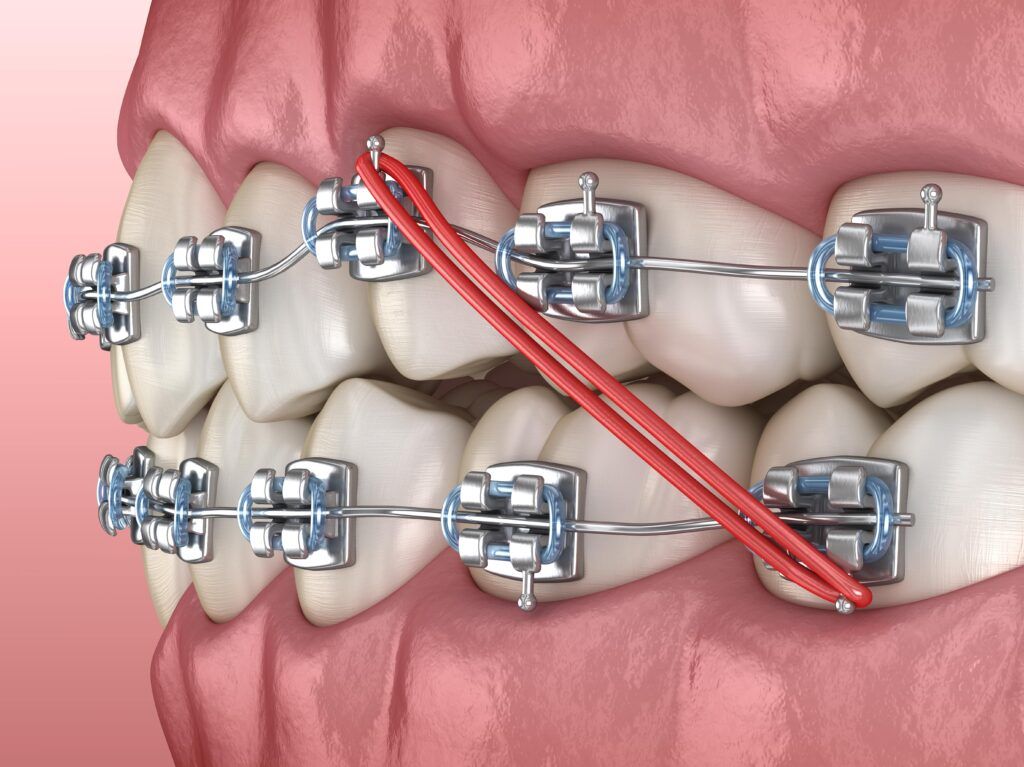Why Cumming Invisalign is the Perfect Option for a Discreet Orthodontic Service
Why Cumming Invisalign is the Perfect Option for a Discreet Orthodontic Service
Blog Article
Comprehensive Overview to Orthodontics Treatments for Correcting Dental Misalignments
In the world of orthodontics, the journey to achieving a flawlessly lined up smile entails a myriad of treatments customized to remedy dental misalignments. From standard dental braces to unseen aligners and even medical alternatives, the area of orthodontics provides a variety of options to resolve varying levels of oral irregularities. Understanding the details of each procedure, including their mechanisms, benefits, and potential drawbacks, is crucial in making educated choices concerning one's orthodontic therapy. As we navigate via the comprehensive guide to orthodontic treatments for remedying dental misalignments, the intricate information of each technique will unfold, shedding light on the course towards a unified and functional oral alignment.
Orthodontic Procedures Introduction

Along with clear aligners and standard braces, orthodontists might additionally recommend various other interventions like headgear, palatal expanders, or retainers to deal with details placement issues (cumming orthodontics). These treatments are tailored to each individual's one-of-a-kind requirements and might entail a combination of treatments to achieve the desired outcomes. Normal changes and monitoring are important parts of orthodontic treatment to ensure progress gets on track and to make any needed modifications along the road. By going through orthodontic treatments, patients can not only attain a straighter grin yet likewise boost their overall dental health and function.
Traditional Dental Braces: Just How They Function
When thinking about orthodontic therapies for dental imbalances, traditional braces stand out as a reliable technique for dealing with teeth positioning. Typical dental braces consist of brackets, wires, and bands that function together to use continuous stress on the teeth, slowly moving them into the desired positioning.
As pressure is used to the teeth via the braces, the bone bordering the teeth is reshaped to support the new tooth placements. Clients will need normal modifications at the orthodontist's office to guarantee the braces proceed to use the correct pressure for efficient teeth activity.
Undetectable Aligners: Benefits And Drawbacks
These clear, personalized trays are virtually undetectable when put on, making them an attractive alternative for people looking for a much more cosmetically pleasing orthodontic therapy. Individuals can get rid of the aligners before consuming or cleaning their teeth, reducing the threat of food obtaining stuck in the device and streamlining the cleansing procedure.

Surgical Orthodontic Options
Surgical treatments in orthodontics present practical alternatives for resolving complicated oral misalignments that may not be efficiently solved through traditional orthodontic treatments. While traditional dental braces and undetectable aligners can remedy lots of orthodontic concerns, specific situations call for medical intervention to attain optimum results. Surgical orthodontic options are commonly recommended for severe malocclusions, substantial jaw disparities, and instances where the underlying bone framework needs modification to accomplish appropriate positioning.
One usual medical orthodontic treatment is orthognathic surgery, which involves repositioning the jaws to correct practical problems such as difficulty chewing or speaking. This surgical procedure is frequently carried out in cooperation with an orthodontist who assists align the teeth before and after the procedure. Surgical orthodontics might additionally involve procedures to subject impacted teeth, remove excess gum tissue, or improve the jawbone to develop a much more harmonious face account.
Prior to considering surgical orthodontic alternatives, patients go through a detailed evaluation to establish the requirement and potential benefits of such treatments. braces. While surgical procedure may seem overwhelming, it can dramatically boost both the function and aesthetics of the smile in instances visit this page where traditional orthodontic treatments fail
Retainers and Post-Treatment Care

Post-treatment treatment includes adhering to the orthodontist's guidelines faithfully. This may include appropriate oral hygiene practices, attending follow-up visits, and wearing the retainers as prescribed. Failing to abide by post-treatment care guidelines can lead to regression, where the teeth slowly relocate back towards their original settings. Constant retainer wear, excellent oral health, and regular oral examinations are important for keeping the results accomplished with orthodontic surgical procedure and making certain the long-lasting security blog here of the fixed dental placement.
Final Thought
In conclusion, orthodontic treatments provide numerous alternatives for correcting dental misalignments. Surgical orthodontic alternatives are readily available for more serious misalignments. In general, orthodontic procedures can successfully enhance oral health and visual appearance.
As we navigate through the detailed guide to orthodontic treatments for fixing oral misalignments, the intricate information of each method will certainly unfold, shedding light on the path toward a practical and harmonious dental placement. - braces
One of the most common orthodontic therapies is the usage of dental braces, which consist of metal braces and cables that apply gentle pressure to slowly move teeth into the preferred placement.When considering orthodontic treatments for dental imbalances, typical dental braces stand out as a tried and true method for correcting teeth placing. Furthermore, invisible aligners may not be ideal for intricate orthodontic concerns that need more significant teeth movement, as they are generally suggested for moderate to moderate cases. Retainers are personalized orthodontic devices developed to hold teeth in their corrected placements after the conclusion of orthodontic treatment.
Report this page